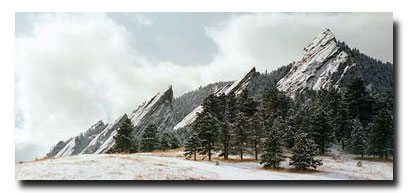| 2007
RiverWare User Group Meeting Preliminary Agenda NCAR/UCAR Center Green Campus Auditorium Boulder, February 6-7, 2007 |

Final Agenda/Presentations |
||
Simulation of Surface water / Groundwater interaction in the Middle Rio Grande Basin
Mike Roark (USGS - Albuquerque), Nabil Shafike and Michael Gabora (New Mexico Interstate Stream Commission)
The Upper Rio Grande Water Operations Model (URGWOM) simulates the interaction between reservoir operations and flow in the downstream reaches and provides a reliable tool for water accounting. The model has been utilized in developing the annual water operations plan, San Juan Chama water accounting and in assessing short and long-term water operations alternatives. However, one shortcoming of the current model configuration is the absence of physically based simulation of groundwater / surface water interactions that led to high uncertainty in meeting target flows associated with the Endangered Species Act (ESA) demands at specific locations in the Middle Rio Grande Valley (MRGV). Currently, seepage is based on regression equations developed using historical conditions and the utilization of a feedback loop to account for error in the estimated seepage. While the current model is reasonably calibrated to historical conditions, it is not known whether the conditions the regressions are based on will persist in the future.
A proof-of-concept (POC) model has been developed for the MRGV portion of URGWOM, which utilizes recent improvements to the groundwater object in RiverWare to simulate groundwater-surface water interactions. The POC model simulates six sub-reaches along the approximately 46-mile section of the MRGV between Cochiti Reservoir and Albuquerque (Central Ave.). The Rio Grande and riverside drains are simulated as reach objects and are linked to underlying shallow groundwater objects, which represent upper 80 feet of the aquifer. Head dependant seepage is simulated based on the head in objects and the specified object conductances. Groundwater objects are also linked to each other in series, which allows for the simulation of head dependant fluxes between groundwater objects. Regional boundary conditions were developed using the Albuquerque Basin Model (McAda and Barroll, 2002) and are incorporated through variable head boundary conditions that are vertically linked to the shallow groundwater objects. Initial model calibration completed for the year 2000 has yielded promising results and suggests that the approach utilized in the POC model is viable alternative.
References
McAda, D. and P.Barroll, 2002. Simulation of Ground-Water Flow in the Middle Rio Grande Basin Between Cochiti and San Acacia, New Mexico. USGS Water-Resources Investigations Report 02-4200.
|
CADSWES - Center for Advanced Decision Support for Water and Environmental Systems cadswes.colorado.edu -- edit February 5, 2007 -- e-mail webmaster |